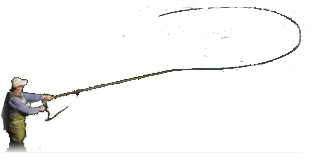Does your brown wear a kilt or lederhosen?
A Scottish-German Disposition
The brown trout first came to America from Germany in 1884, having been released into Michigan's Pere Marquette River. They survived and thrived.
A year later, another batch of browns, these from Scotland's Loch Leven in Kinross, were brought to America and they, too, did very well. (These Loch Leven browns are known for their dark spots and lack of red spots.)
Decades passed. The two strains of browns, one from German rivers and streams, the other from a big (3,500 acres), cold lake in Scotland situated between the Firth of Forth and the Earn, spread and began to eventually mix.
Soon, America had her own brown trout, and it would be one of the most discerning trout to ever swim in North America, known to refuse the very best presentation of a flawless fly, even when the rainbows, cutthroats, and brookies feed with abandon.
This isn't surprising. Take the adaptability of the German and toss in the individuality of the Scot, mix the result with the eclectic appetite of the German and add the discriminating taste of the Scot, and you get the American brown trout.
